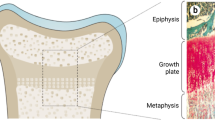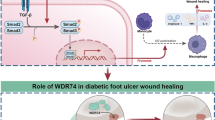Abstract
Netherton syndrome (NS) is a rare, severe type of ichthyosis, often lethal in neonates, for which there is no therapy. Spink5−/− mice recapitulate major NS hallmarks and die homogeneously within 5 h from birth due to severe epidermal barrier defect leading to dehydration. Spink5−/−Klk5−/− mice survive neonatal lethality, indicating that KLK5 could be a drug target for NS. Nevertheless, after a week, these mice developed epidermal inflammation and signs of barrier defect leading to lethality. Here we tested whether anti-TNFα strategy in combination with anti-KLK5 could provide a long-term effective therapy for NS. Deletion of Tnfa in Spink5−/− suppressed the inflammatory phenotype but did not rescue neonatal lethality of Spink5−/− indicating that anti-TNFα therapy alone would not be sufficient to treat NS. Interestingly, in Spink5−/−Klk5−/−Tnfa−/− mice, NS features were rescued, and mice lived normally for 16–18 months. For the first time, evidence is provided that a combination of anti-TNFα and anti-KLK5 therapeutics represents an effective therapeutic strategy for NS. Notably, anti-TNFα factors are marketed and used widely, while LMW KLK5 inhibitors are being developed.





Similar content being viewed by others
References
Chavanas S, Bodemer C, Rochat A, Hamel-Teilac D, Ali M, Irvine AD, Bonafé JL, Wilkinson J, Taïeb A, Barrandon Y, Harper JI, de Prost Y, Hovnanian A. Mutations in SPINK5, encoding a serine protease inhibitor, cause Netherton syndrome. Nat Genet. 2000;25:141–2.
Hewett DR, Simons AL, Mangan NE, Jolin HE, Green SM, Fallon PG, McKenzie AN. Lethal, neonatal ichthyosis with increased proteolytic processing of filaggrin in a mouse model of Netherton syndrome. Hum Mol Genet. 2005;14:335–6.
Pampalakis G, Zingkou E, Kaklamanis L, Spella M, Stathopoulos GT, Sotiropoulou G. Elimination of KLK5 inhibits early skin tumorigenesis by reducing epidermal proteolysis and reinforcing epidermal microstructure. Biochim Biophys Acta Mol Basis Dis. 2019;1865:165520.
Furio L, Pampalakis G, Michael IP, Nagy A, Sotiropoulou G, Hovnanian A. KLK5 inactivation reverses cutaneous hallmarks of Netherton syndrome. PLoS Genet. 2015;21:e1005389.
Kasparek P, Ileninova Z, Zbodakova O, Kanchev I, Benada O, Chalupsky K, Brattsand M, Beck IM, Sedlacek R. (2017) KLK5 and KLK7 ablation fully rescues lethality of Netherton syndrome-like phenotype. PLoS Genet. 2017;13:e1006566.
Walker AL, Bingham R, Edgar EV, Ferrie A, Holmes DS, Liddle J, Polyakova O, Rella M, Smith KJ, Thorpe JH, Wang Y, White GV, Young RJ, Hovnanian A. Structure guided drug design to develop kallikrein 5 inhibitors to treat Netherton syndrome. Bioorg Med Chem Lett. 2019;29:1454–8.
Liddle J, Beneton V, Benson M, Bingham R, Bouillot A, Boullay AB, Brook E, Cryan J, Denis A, Edgar E, Ferrie A, Fouchet MH, Grillot D, Holmes DS, Howes A, Krysa G, Larose A, Lennon M, McClure F, Moquette A, Nicodeme E, Santiago B, Santos L, Smith KJ, Thorpe JH, Thripp G, Trottet L, Walker AL, Ward SA, Wang Y, Wilson S, Pearce AC, Hovnanian A. A potent and selective kallikrein-5 inhibitor delivers high pharmacological activity in skin from patients with Netherton syndrome. J Invest Dermatol 2021; https://doi.org/10.1016/j.jid.2021.01.029
Pasparakis M, Alexopoulou L, Episkopou V, Kollias G. Immune and inflammatory responses in TNF alpha-deficient mice: a critical requirement for TNF alpha in the formation of primary B cell follicles, follicular dendritic cell networks and germinal centers, and in the maturation of the humoral immune response. J Exp Med. 1996;184:1397–411.
Lourbakosa A, Chinnia C, Thompsonb P, Potempac J, Travisd J, Mackiee EJ, Pike RN. Cleavage and activation of proteinase-activated receptor-2 on human neutrophils by gingipain-R from Porphyromonas gingivalis. FEBS Letters. 1998;435:45–8.
Fontao L, Laffitte E, Briot A, Kaya G, Roux-Lombard P, Fraitag S, Hovnanian A, Saurat JH. Infliximab infusions for Netherton syndrome: sustained clinical improvement correlates with a reduction of thymic stromal lymphopoietin levels in the skin. J Invest Dermatol. 2011;131:1947–50.
Roda Â, Mendonça-Sanches M, Travassos AR, Soares-de-Almeida L, Metze D. Infliximab therapy for Netherton syndrome: a case report. JAAD Case rep. 2017;3:550–2.
Cicek F, Cecik S, Kilic SS. Infliximab therapy in an infant with Netherton syndrome. Pediatr Dermatol. 2021;38:714–6.
Petrova E, Hovnanian A. Advances in understanding of Netherton syndrome and therapeutic implications. Expert Opin Orphan Drugs. 2020;8:455–87.
Blanchard SK, Prose NS. Successful use of secukinumab in Netherton syndrome. JAAD Case Rep. 2020;6:577–8.
Luchsinger I, Knöpfel N, Theiler M, des Claustres MB, Barbieux C, Schwieger-Briel A, Brunner C, Donghi D, Buettcher M, Meier-Schiesser B, Hovnanian A, Weibel L. Secukinumab therapy for Netherton syndrome. JAMA. Dermatology. 2020;156:907–11.
Williams MR, Cau L, Wang Y, Kaul D, Sanford JA, Zaramela LS, Khalil S, Butcher AM, Zengler K, Horswill AR, Dupont CL, Hovnanian A, Gallo RL. Interplay of staphylococcal and host proteases promotes skin barrier disruption in Netherton syndrome. Cell Rep. 2020;30:2923–33.
Williams MR, Nakatsuji T, Sanford JA, Vrbanac AF, Gallo RL. Staphylococcus aureus induces increased serine protease activity in keratinocytes. J Invest Dermatol. 2017;137:377–84.
Ali T, Kaitha S, Mahmood S, Ftesi A, Stone J, Bronze MS. Clinical use of anti-TNF therapy and increased risk of infections. Drug Healthc Patient Saf. 2013;5:79–99.
Zingkou E, Pampalakis G, Sotiropoulou G. Cathelicidin represents a new target for manipulation of skin inflammation in Netherton syndrome. Biochim Biophys Acta Mol Basis Dis. 2020;1866:165831.
Acknowledgements
We would like to thank Prof George Kollias (BSRC Alexander Fleming, Athens, Greece) and Prof Andriew McKenzie (MRC Laboratory of Molecular Biology, Cambridge, UK) for kindly providing the Tnfα−/− and the Spink5−/− mice, respectively. We also thank Dr. Andreas Seferlis (Laboratory of Electron Microscopy and Microanalysis, University of Patras, Greece) for technical assistance with scanning electron microscopy, and finally, Dr. Dalila Darmoul for kindly offering the quenched PAR2 peptide.
Availability of Data and Material
All data/materials are available upon request.
Code Availability
Not applicable.
Funding
This study is funded, in part, by the research project (Skink5 LS4-2139) implemented within the framework of the Action “Supporting Postdoctoral Researchers” of the Operational Program “Education and Lifelong Learning” (Action’s Beneficiary: General Secretariat for Research and Technology) and is co-financed by the European Social Fund (ESF) and the Greek State.
Author information
Authors and Affiliations
Contributions
EZ investigation, methodology, data curation, validation; GP methodology, validation; GS conceptualization, supervision, funding acquisition, resources, validation; all authors participated in writing the original draft.
Corresponding author
Ethics declarations
Ethics Approval
All experiments with animals were carried out in accordance with the EU and national legal and ethical regulations following governmental approval of the experimental protocol (Veterinary Department of Regional Units of Achaia, Region of Western Greece).
Consent to Participate
Not applicable.
Consent for Publication
All authors have approved the final version of the manuscript.
Conflict of Interest
The authors declare no competing interests.
Additional information
Publisher’s Note
Springer Nature remains neutral with regard to jurisdictional claims in published maps and institutional affiliations.
Supplementary Information
ESM 1
(DOCX 13 kb)

Fig. S1
Deletion of Tnfa in Spink5-/-Klk5-/- mice is associated with attenuated expression of proinflammatory cytokines. Relative expression of proinflammatory cytokines and quantification of mast cells infiltrating the dermis of newborn mice (A) and 4-month old mice (B). The mRNA levels of proinflammatory cytokines were determined by RT-qPCR. Expression is normalized against Hprt1 and shown as fold difference to wt expression. Values represent mean ± S.E.M. (PNG 153 kb)
Rights and permissions
About this article
Cite this article
Zingkou, E., Pampalakis, G. & Sotiropoulou, G. Cocktails of KLK5 Protease Inhibitors and Anti-TNFα Therapeutics: an Effective Treatment for Netherton Syndrome. J Clin Immunol 42, 597–605 (2022). https://doi.org/10.1007/s10875-021-01195-0
Received:
Accepted:
Published:
Issue Date:
DOI: https://doi.org/10.1007/s10875-021-01195-0




